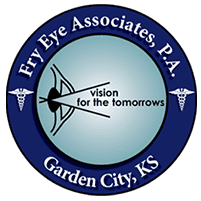Glaucoma Surgery
Treatment of glaucoma depends on the type and severity of glaucoma. There are a wide variety of available medical and surgical treatments today, ranging from prescription eyedrops and noninvasive lasers to more aggressive surgical procedures that are needed for more serious cases. The goal for most treatments is to safely reduce eye pressure which in turn slows down the progression of the disease. At Fry Eye Associates your physician will strive to maximize the balance of safety and effectiveness in determining which treatment is best indicated for each patients’ unique scenario. The end-goal of any of these treatments is always the same: prevent vision loss from glaucoma.
Learn More

Glaucoma Surgery FAQ
A noninvasive laser treatment used to reduce your risk of vision loss from angle-closure by creating a tiny opening at the edge of the eye’s iris that allows improved fluid flow between the compartments in the front of the eye, which helps to keep the eye’s angle (where most fluid outflow occurs) more open. LPI is most commonly performed for patients with narrow angles or angle closure glaucoma (chronic or acute), either as initial treatment or as an addition to other treatments.
A minimally invasive glaucoma surgery that decreases intraocular pressure in your eye by inserting tiny titanium stents into your eye’s internal drainage system called the trabecular meshwork, allowing improved outflow of the eye’s fluid (aqueous humor). iStent is most commonly performed at the time of cataract surgery in patients with open angle glaucoma.
A minimally invasive glaucoma surgery that decreases intraocular pressure in your eye by removing part of the first layer of the eye’s internal drainage system called the trabecular meshwork, allowing improved outflow of the eye’s fluid (aqueous humor). This procedure is most commonly performed at the time of cataract surgery in patients with open angle glaucoma, though it can done as a standalone procedure as well.
A surgical procedure that places a low-profile drainage device that leads from the front chamber of the eye (anterior chamber) to an area under the skin of the eye (conjunctiva), allowing more fluid (aqueous humor) to leave the eye in order to decrease intraocular pressure. A Xen Gel Stent is most commonly used for patients with severe forms of glaucoma, where other treatments are not indicated or have been ineffective. The procedure can be performed alone or with cataract surgery.
A surgical procedure involving placement of a drainage device that leads from the front chamber of the eye (anterior chamber) to an area under the skin of the eye (conjunctiva), allowing more fluid (aqueous humor) to leave the eye. A tube shunt procedure is most commonly performed for patients with severe forms of glaucoma where other treatments are not indicated or have been ineffective. The procedure can be performed alone or with cataract surgery.
A laser procedure used to decrease intraocular pressure in the eye by altering the fluid-forming cells that are found in a structure called the ciliary body, so that the cells produce less fluid (aqueous humor). This should result in a lower eye pressure. Micropulse CPC is performed at our outpatient surgery center, typically for patients with more advanced stages (though not always) of glaucoma of nearly any type, with or without other treatments. For some the goal is to prevent further vision loss from glaucoma by lowering the eye pressure, while in others with a blind painful eye, the goal is to reduce pain and improve quality of life.
A laser procedure used to decrease intraocular pressure in the eye by altering the fluid-forming cells that are found in a structure called the ciliary body, so that the cells produce less fluid (aqueous humor). This should result in a lower eye pressure. Done at our surgery center, continuous-wave CPC is typically performed for patients with very advanced or end-stage glaucoma where previous treatments have failed or other/further treatments are not advised. . The goal in these cases is to prevent further vision loss from glaucoma. It is also used for blind painful eyes with poor visual potential and high eye pressure to reduce pain and improve quality of life by lowering the eye pressure.
Schedule Your Visit
Our doctors are here to help address your concerns about your eyes and are experts in finding solutions that work best for you.


